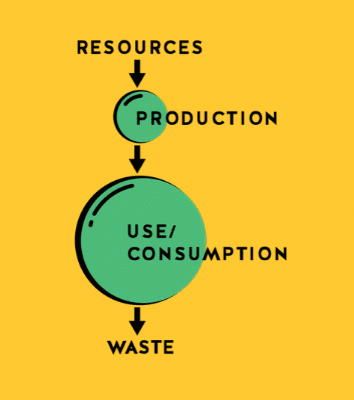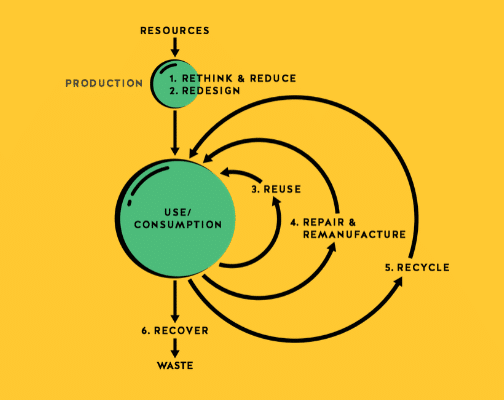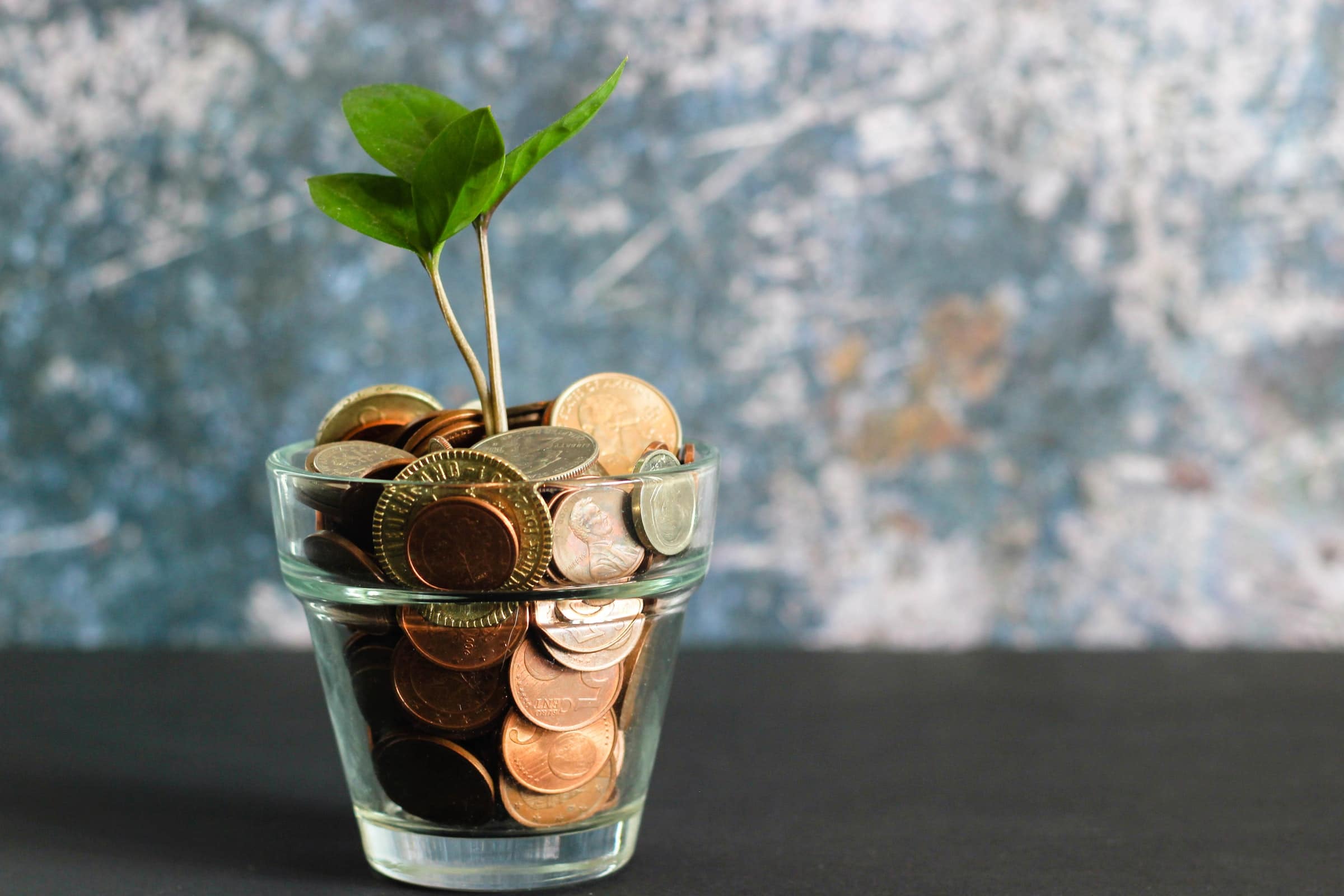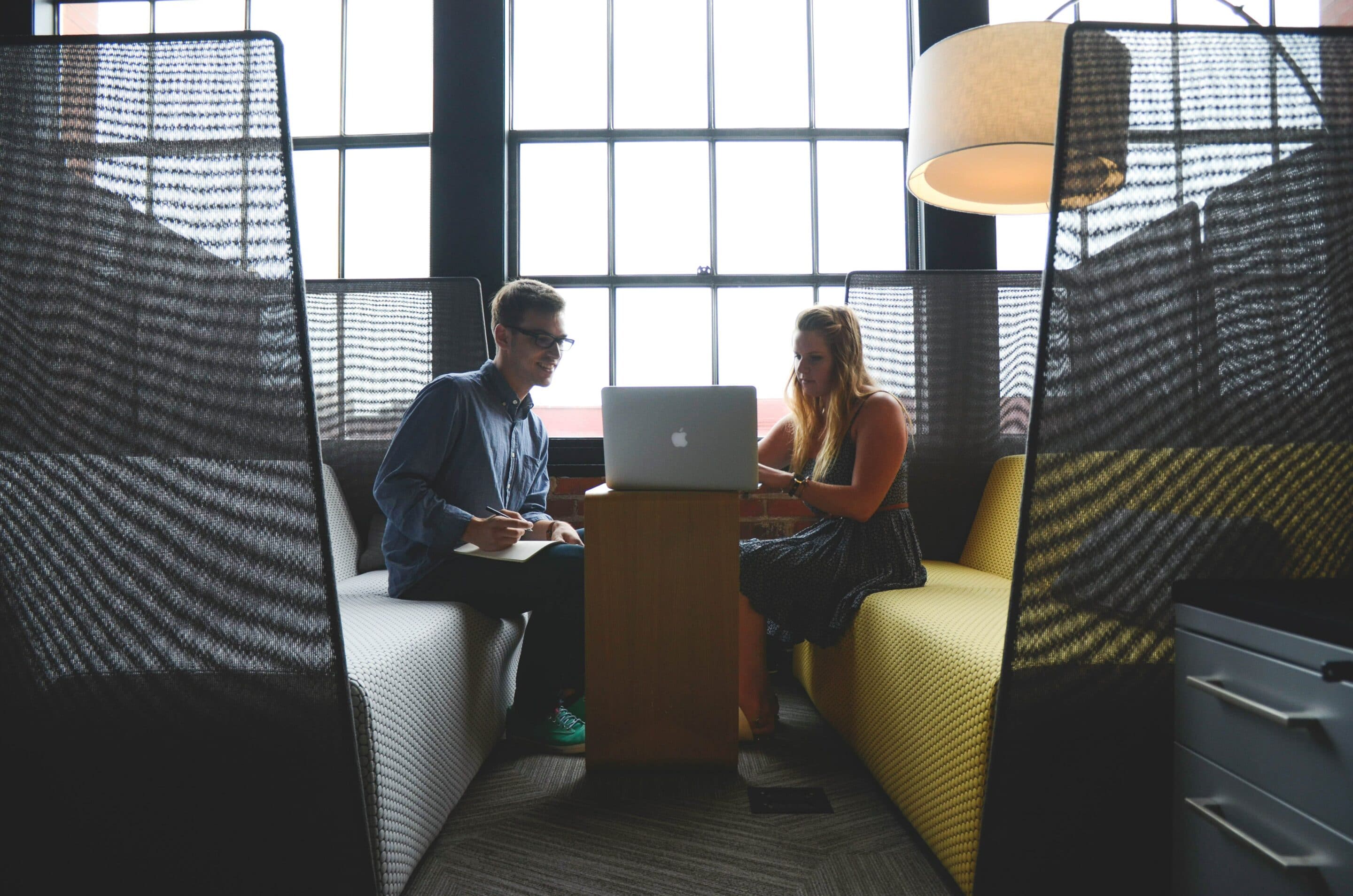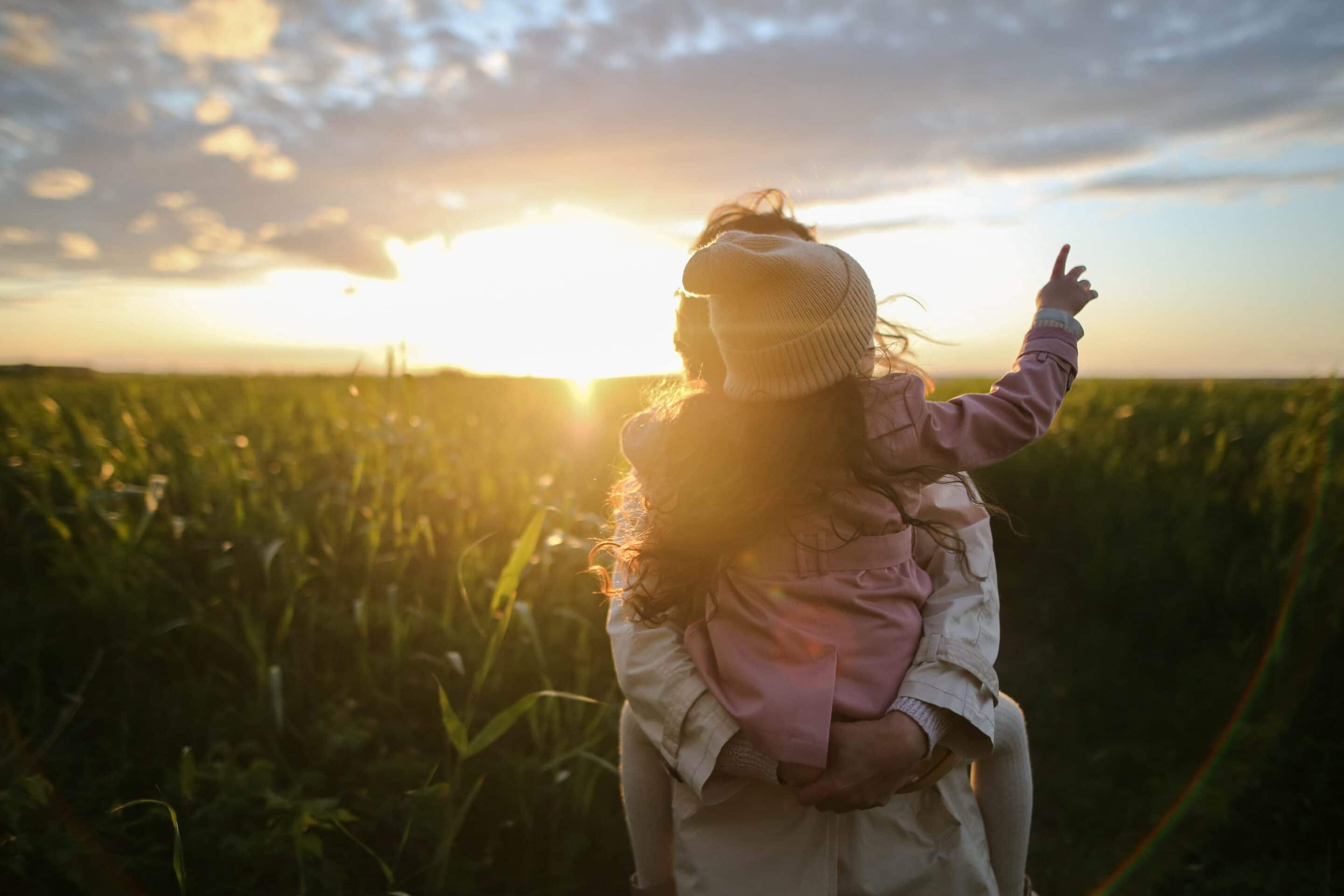At Recyclops, we are committed to finding better ways to deal with our daily waste in ways that are better for the environment and communities in which we operate. We continue to follow our core values to create a more sustainable way for people to live, starting with recycling.
Recycling allows us to help reduce our carbon footprint on the planet, just by diverting waste away from landfills. But what if landfills weren’t needed in the first place? This is possible through the incorporation of a circular economy, a new form of economy which aims to eliminate waste using a true closed-loop system.
To understand what a circular economy is, however, we have to understand what our current system is and why there is a clear need to shift away from our linear economy.
What Is a Linear Economy?
Many of our economic functions use a linear model, meaning that materials and products created and used follow a singular path, usually ending with being discarded in the landfill.
This creates large issues with the creation of waste as countries all over the world have seen. This linear process has also influenced the business models of several businesses and industries with the creation of fast fashion and single-use plastics. From an economic standpoint, many businesses don’t see an issue with single-use materials because of the cheap cost of goods from manufacturers but this has caused a massive backlash in terms of waste production.
For example, according to the Environmental Protection Agency (EPA) the average American creates up to 4.4 pounds of waste each day, most of which is recyclable materials. Comparing that to the world average of 1.6 pounds per person, the American average is much higher, which has caused more landfills than ever to start sprouting up throughout the US to combat this growing problem.
Annually, the US creates up to 269 million tons of recyclable waste, with the majority of it missing the recycling process altogether. This is due to many factors such as confusion of what can be recycled and what can’t as well as contamination of recyclable materials. As recorded by the EPA this causes around only 47% of all recyclable materials to be recycled each year, leaving the rest to end up in landfills.
There is much work to be done to make this linear economy more sustainable in the long run and this begins with how our economy is shaped.
The Definition of a Circular Economy.
As defined by the Sustainability Guide, a circular economy is a manifestation of economic models that highlight business opportunities where cycles, rather than linear processes, dominate. It is restorative and regenerative by design and aims to keep products, components, and materials at their highest utility and value at all times.
This type of economy works to create long-term sustainability at its source through the investment into quality materials and products as well as technology which can push the materials to be easily returned by the consumer and immediately pushed into new use.
One might think that this system only affects the amount of recycling that is done in a community but it is more complicated than that. As said by Andrew Morlet, CEO of the Ellen MacArthur Foundation: “The circular economy is a bigger idea that takes the entire system into mind.”. This means that the entire economic process has to be reworked to motivate manufacturers and producers to create longer-lasting products that allow the materials to be reused, recycled into their virgin materials, or upcycled into new products by consumers. This would eliminate material waste at its core, allowing consumers to invest in products that will last over the long term and decrease pressure for one-time manufacturing.
This will take a massive investment by both governments and businesses in order to create this new system. Andrew Morlet had this to say on the cost associated with this economic system development, “It’s not a $1 billion problem—it’s a $150 billion problem,”. “We need to have industry stepping up and actually contributing to the creation of that infrastructure so that these systems can work.”.
With the heavy investment needed by governments and businesses alike, it’s hard to convince those making these decisions to get involved and support this kind of change. That’s why it’s important to understand the benefits of implementing a circular economy in the first place.
The Benefits of a Circular Economy.
From a business perspective, it’s hard to understand that spending more on valuable and sustainable products will increase your annual return, but that’s the case. Halsey Cook, CEO of Milliken & Company, pointed to a recent ranking of most ethical companies, and stated, “The data is very clear that companies that focus on doing the right things over time have higher returns,”.
As it turns out, now more than ever consumers are looking at their purchases with different goals in mind, such as sustainability and their impact on the environment around them. This pushes companies to lay higher importance on the proper selection of environmentally friendly products and the overall investment into higher quality materials. While it’s a step in the right direction, it’s hard for some businesses to see all the benefits these values can bring along with the incorporation of a circular economy.
1) Benefits for Consumers:
There is a major benefit given to consumers from a financial perspective as well as a long-term wellbeing perspective. Consumers now would have to spend less on products and materials regularly since their products would last longer and be made of better materials. Additionally, consumers would no longer have to deal with the stress of waste pile-up as well as cheaply made products.
2) Benefits for the Economy:
The economy would see large growth through the use of a circular economy primarily through the increase in GDP. This increase would be caused by the higher value of the product as the materials and manufacturing process would create a higher material value as well as perceived value by the consumer. The increase of investment by government and industry would allow for innovation within the entire economy to be increased as well.
3) Benefits for Businesses:
Businesses will now have an engaged and loyal consumer base allowing them to more effectively research and remarket to these consumers. Additionally, the cost of higher value materials would decrease as the investment into better technology and supply of said materials is increased.
4) Benefits for the Environment:
Since less waste is entering the landfills the immediate benefit would be a reduction in the dependency on landfills within communities. Furthermore, since a circular economy relies heavily on recycling technology and investment by both businesses and government, newer and more efficient ways of recycling will be implemented creating an even more positive effect on the environment.
How Recyclops Works to Create a Circular Economy.
Recyclops works to bring convenience for all when it comes to sustainability and recycling. By allowing our customers easy access to have their recycling picked up, communities that lack proper recycling now can leave a smaller footprint on their surrounding environment.
Recyclops also invests heavily in those living in each community, offering many types of employment to boost the surrounding economy. This creates a dual benefit not only for the environment but also for those living in it locally.
Additionally, Recyclops is working to partner with local businesses and organizations in each of our areas of operation to bring sustainable practices at every level. The more areas we can bring Recyclops, the more waste can be diverted from landfills, creating a more green environment for all.
Start Recycling with Recyclops.
Our team at Recyclops makes it easy to recycle today straight from the convenience of your home. With our service, you know that your recyclables are going to a designated recycling facility and not a landfill. Learn more about where your recycling goes here.
Depending on your location, recycling is as easy as putting all your materials in one or more bags (depending on how many you have) and putting them right on your doorstep or curbside. Your local Recyclops driver will be there to pick up your materials and ensure they arrive at the destination. And don’t worry about making space for another bin, Recyclops bags or carts come with all our services and pickups come at your convenience.
We want to make recycling easy and simple, and that starts with recycling on your schedule.
Check Out Our Other Posts.
by Spencer Olsen | September 8, 2023 | Announcements | 0 Comments
Recyclops Achieves B Corp Certification Recyclops is proud to join some of the best brands in the world by achieving B Corp CertificationRecyclops Achieves B-Corp Certification: A Milestone in Sustainability Leadership 🌍 🌱We are thrilled to announce that Recyclops,...
by Spencer Olsen | August 29, 2022 | Post, Utah, Wasatch County | 0 Comments
We're excited to announce we are launching a new food waste recycling program exclusively offered to our Wasatch County customers! Did you know that there is more organic waste in landfills than any other item? Food waste makes up over 1/3 of landfill material and...
by Spencer Olsen | August 19, 2022 | Post | 0 Comments
Whether you or your children are incoming first-year students or returning to campus this fall, pursuing a greener move-in experience is possible if you consider: Coordinating needs with future roommates/suitemates and only bringing what you need. It may be possible...
by Spencer Olsen | August 15, 2022 | Post | 0 Comments
Sustainable fashion has been an ongoing trend and introduced environmental practices to businesses as early as the 1980s. As our kids gear up to return to the classrooms, this is also the time to focus on fashion, uniforms and styles that work to assist our...
by Spencer Olsen | August 5, 2022 | Post | 0 Comments
Back to School Did you know that an American school uses about 250,000 pieces of paper on average a year?Think about the number of schools in the US. We’re talking about billions of sheets of paper. And that’s only paper, without taking into account the plastics. So,...
by Spencer Olsen | August 1, 2022 | Post | 0 Comments
It's our final week of Plastic Education month. We've discussed ways to recycle plastic and how it's recycled... but we also want to note the harmful effects of plastic on our environment. It's so important to recycle and keep it out of our landfills as much as...
by Spencer Olsen | July 25, 2022 | Post | 0 Comments
We are highlighting Plastic Education this month. In our ongoing series, this week we are focusing on, “How Plastics are Recycled.” There are different types of recycling: traditional vs. advanced. Did you know the US is the world’s largest plastic creator and...
by Spencer Olsen | July 15, 2022 | Post | 0 Comments
There is plastic all around us. From soda bottles, grocery bags, to your ID card, even in your clothes! We use plastic every day even when we don’t know it. Many of these plastics come from materials like petrochemicals. The amount of plastic around us can have...
by Spencer Olsen | July 1, 2022 | Post | 0 Comments
Are You Recycling Your Metal Cans the Right Way? Here's What to Do: All cans are recyclable, but make sure you're doing it correctly. Here are the do's and don'ts. One small thing you can do to help the planet is to start keeping track of how many cans you go through...
by Spencer Olsen | June 29, 2022 | Announcements | 0 Comments
Recyclops has just launched in Chesapeake, VA! If you live in the Chesapeake, Virginia area, you can now sign up for Recyclops services! You may be asking yourself, “What is Recyclops”? Recyclops is an at home pick up recycling service. We collect items such as...
